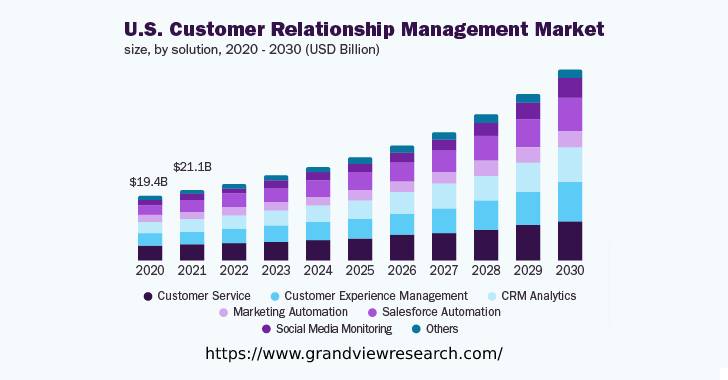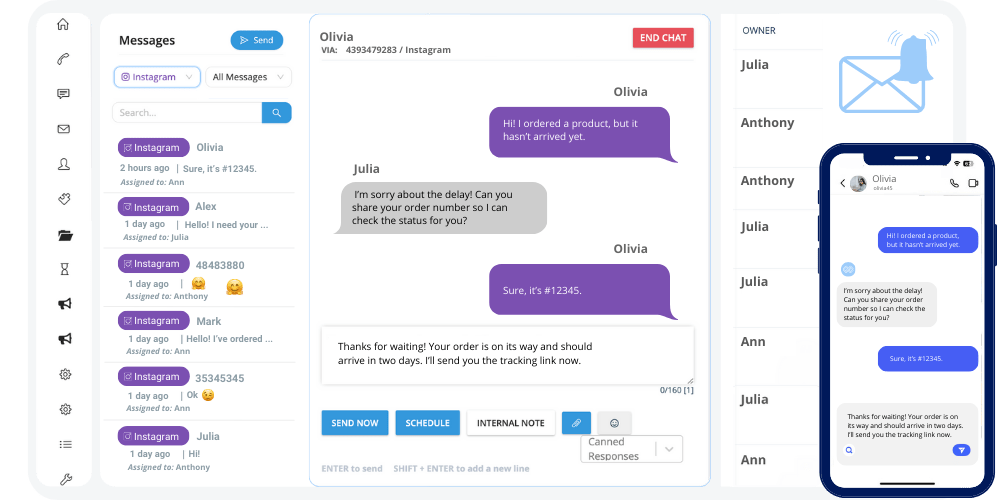
CRM Marketing Strategy 2025: Revolutionizing Customer Relationships for Unprecedented Growth
The world of marketing is in constant flux, a dynamic environment shaped by technological advancements, evolving consumer behaviors, and the ever-present pressure to deliver exceptional results. As we approach 2025, the role of Customer Relationship Management (CRM) in marketing strategies will be more critical than ever. This isn’t just about managing customer data; it’s about building meaningful relationships, personalizing experiences, and driving sustainable growth. This article delves into the core of CRM marketing strategy for 2025, exploring the key trends, technologies, and best practices that will define success in the years to come.
The Evolution of CRM in Marketing
Before we dive into the future, let’s briefly examine the evolution of CRM. Initially, CRM systems were primarily used for sales automation and contact management. Over time, they expanded to include marketing automation, customer service, and analytics. Today, CRM is the central nervous system of a modern marketing organization, providing a 360-degree view of the customer and enabling businesses to deliver highly targeted and personalized experiences.
The shift has been from a product-centric approach to a customer-centric one. Businesses are no longer just selling products; they’re building relationships. This fundamental change has reshaped marketing strategies, making CRM an indispensable tool for understanding customer needs, preferences, and behaviors.
Key Trends Shaping CRM Marketing in 2025
Several key trends are poised to revolutionize CRM marketing by 2025. Understanding these trends is crucial for businesses looking to stay ahead of the curve and gain a competitive advantage.
1. Artificial Intelligence (AI) and Machine Learning (ML)
AI and ML are no longer futuristic concepts; they are integral parts of modern CRM systems. In 2025, AI will play an even more significant role in automating tasks, personalizing customer interactions, and providing predictive insights. Here’s how:
- Personalized Recommendations: AI algorithms will analyze customer data to provide highly personalized product recommendations, content suggestions, and offers, increasing conversion rates and customer satisfaction.
- Predictive Analytics: AI will predict customer behavior, such as churn risk, purchase likelihood, and lifetime value, enabling marketers to proactively engage with customers and optimize marketing campaigns.
- Automated Chatbots: AI-powered chatbots will handle customer inquiries, provide instant support, and qualify leads, freeing up human agents to focus on more complex issues.
- Hyper-Personalization: AI will enable hyper-personalization by tailoring every interaction to each customer’s individual needs and preferences, creating a truly unique and engaging experience.
2. Enhanced Customer Data Platforms (CDPs)
CDPs are becoming increasingly important for centralizing customer data from various sources. In 2025, CDPs will evolve to offer even more sophisticated features, including:
- Unified Customer Profiles: CDPs will create a single, unified view of each customer, consolidating data from all touchpoints, including website visits, social media interactions, email communications, and purchase history.
- Real-time Data Processing: CDPs will process data in real-time, enabling marketers to respond to customer behavior instantly and deliver timely and relevant messages.
- Data Privacy and Security: With growing concerns about data privacy, CDPs will prioritize data security and compliance with regulations such as GDPR and CCPA.
- Integration with AI and ML: CDPs will seamlessly integrate with AI and ML tools, providing marketers with powerful insights and enabling them to automate and personalize marketing campaigns.
3. The Rise of Conversational Marketing
Conversational marketing is about engaging customers in real-time conversations across various channels, including chatbots, messaging apps, and social media. In 2025, conversational marketing will become even more prevalent, with businesses leveraging it to build stronger relationships and drive conversions.
- Personalized Interactions: Conversational marketing allows businesses to have personalized conversations with customers, addressing their specific needs and answering their questions in real-time.
- 24/7 Availability: Chatbots and other conversational tools provide 24/7 availability, ensuring that customers can get the support they need whenever they need it.
- Lead Generation: Conversational marketing can be used to qualify leads, gather customer information, and guide them through the sales funnel.
- Enhanced Customer Experience: Conversational marketing creates a more engaging and interactive customer experience, leading to higher satisfaction and loyalty.
4. Increased Focus on Customer Experience (CX)
Customer experience will be the ultimate differentiator in 2025. Businesses that prioritize CX will be the ones that thrive. CRM systems will play a vital role in delivering exceptional CX by:
- Personalized Journeys: CRM systems will enable marketers to create personalized customer journeys, tailoring each interaction to the customer’s individual needs and preferences.
- Seamless Omnichannel Experiences: CRM will facilitate seamless omnichannel experiences, allowing customers to interact with a brand across multiple channels without any disruption.
- Proactive Customer Service: CRM systems will enable businesses to proactively identify and address customer issues, preventing problems before they arise.
- Collecting and Analyzing Customer Feedback: CRM will be used to collect and analyze customer feedback, providing valuable insights that can be used to improve products, services, and overall CX.
5. Integration of CRM with Other Technologies
CRM systems will integrate with a wider range of technologies in 2025, creating a more unified and efficient marketing ecosystem. This includes:
- Marketing Automation Platforms: Integration with marketing automation platforms will enable marketers to automate and personalize marketing campaigns, nurturing leads and driving conversions.
- Social Media Management Tools: Integration with social media management tools will allow marketers to monitor social media conversations, engage with customers, and manage their social media presence.
- E-commerce Platforms: Integration with e-commerce platforms will provide a complete view of the customer journey, from browsing to purchase, enabling marketers to personalize the shopping experience.
- Business Intelligence (BI) Tools: Integration with BI tools will provide marketers with advanced analytics and reporting capabilities, enabling them to make data-driven decisions.
Building a Robust CRM Marketing Strategy for 2025
Implementing a successful CRM marketing strategy requires careful planning and execution. Here are some key steps to take:
1. Define Your Goals and Objectives
Before implementing any CRM strategy, it’s crucial to define your goals and objectives. What do you want to achieve with your CRM system? Do you want to increase sales, improve customer satisfaction, or reduce churn? Clearly defined goals will help you choose the right CRM system, set up your campaigns, and measure your results.
2. Choose the Right CRM System
Selecting the right CRM system is critical to your success. Consider the following factors:
- Functionality: Does the system offer the features you need, such as sales automation, marketing automation, customer service, and analytics?
- Scalability: Can the system grow with your business?
- Integrations: Does the system integrate with your existing tools and platforms?
- Ease of Use: Is the system user-friendly and easy to learn?
- Cost: Is the system affordable and within your budget?
3. Clean and Organize Your Data
Data is the foundation of any successful CRM strategy. Clean and organized data is essential for accurate reporting, personalized campaigns, and effective decision-making. Make sure your data is:
- Accurate: Verify the accuracy of your data and correct any errors.
- Complete: Ensure that you have all the necessary data for each customer.
- Consistent: Maintain consistent data formatting and naming conventions.
- Up-to-date: Regularly update your data to reflect changes in customer information.
4. Segment Your Audience
Audience segmentation is the process of dividing your customer base into groups based on shared characteristics, such as demographics, behavior, and purchase history. Segmentation allows you to personalize your marketing messages and target specific customer groups with relevant offers and content.
5. Develop Personalized Campaigns
Personalized campaigns are more effective than generic campaigns. Use your CRM data to create targeted messages that resonate with each customer segment. Consider using:
- Personalized email marketing: Send targeted emails based on customer behavior, purchase history, and preferences.
- Personalized website experiences: Customize your website content and offers based on customer data.
- Personalized product recommendations: Suggest relevant products based on customer browsing and purchase history.
6. Automate Your Marketing Processes
Marketing automation can save you time and resources by automating repetitive tasks, such as email marketing, lead nurturing, and social media posting. Automate your marketing processes to improve efficiency and free up your team to focus on more strategic initiatives.
7. Track and Analyze Your Results
Track your results and analyze your data to measure the effectiveness of your CRM marketing strategy. Use your CRM system’s analytics tools to monitor key metrics, such as:
- Conversion rates: Track the percentage of leads that convert into customers.
- Customer acquisition cost (CAC): Calculate the cost of acquiring a new customer.
- Customer lifetime value (CLTV): Estimate the total revenue a customer will generate over their lifetime.
- Churn rate: Measure the percentage of customers who cancel their subscriptions or stop doing business with you.
- Return on investment (ROI): Calculate the ROI of your marketing campaigns.
8. Continuously Optimize Your Strategy
CRM marketing is an ongoing process. Continuously optimize your strategy based on your results and the latest trends. Experiment with different approaches, test your campaigns, and make adjustments as needed. Stay agile and adapt to the ever-changing marketing landscape.
Technologies to Master for CRM Marketing in 2025
To thrive in the world of CRM marketing by 2025, marketers will need to become proficient in several key technologies. Here’s a glimpse:
1. AI and Machine Learning Platforms
Understanding how to leverage AI and ML platforms will be crucial. This includes familiarity with:
- Natural Language Processing (NLP): For understanding and responding to customer inquiries.
- Machine Learning Algorithms: For predictive analytics and personalization.
- AI-powered CRM tools: Familiarizing yourself with the AI capabilities of your chosen CRM platform.
2. Customer Data Platforms (CDPs)
A solid grasp of CDPs is essential. This includes:
- Data Integration: Understanding how to connect various data sources.
- Data Segmentation: Creating and managing customer segments.
- Data Privacy and Compliance: Ensuring data is handled securely and in compliance with regulations.
3. Marketing Automation Platforms
Proficiency in marketing automation platforms is vital. This includes:
- Workflow Automation: Designing and implementing automated workflows.
- Email Marketing: Creating and managing email campaigns.
- Lead Nurturing: Developing strategies to nurture leads through the sales funnel.
4. Conversational Marketing Tools
Marketers should be familiar with:
- Chatbot Development: Understanding how to build and deploy chatbots.
- Messaging Apps: Using messaging apps for customer communication.
- Real-time Engagement: Engaging with customers in real-time across different channels.
5. Data Visualization Tools
Being able to interpret data visually is key. This includes:
- Dashboard Creation: Building and managing dashboards to track key metrics.
- Data Reporting: Creating reports to communicate insights to stakeholders.
- Data Storytelling: Using data to tell compelling stories.
The Future of Customer Relationships: What to Expect Beyond 2025
The evolution of CRM doesn’t stop in 2025. Several trends will continue to shape the future of customer relationships:
1. The Rise of the Metaverse
The metaverse, a virtual world where users can interact with each other and digital content, will present new opportunities for CRM. Businesses will be able to create immersive customer experiences, such as virtual showrooms, personalized events, and interactive product demos. This will require new CRM strategies that are tailored to the unique characteristics of the metaverse.
2. Augmented Reality (AR) and Virtual Reality (VR)
AR and VR technologies will enhance customer experiences by allowing customers to interact with products and services in new and innovative ways. For example, customers could use AR to try on clothes virtually or VR to tour a property remotely. CRM systems will need to integrate with AR and VR platforms to deliver personalized experiences.
3. The Internet of Things (IoT)
The IoT, the network of interconnected devices, will generate vast amounts of data about customer behavior. This data can be used to personalize marketing messages, improve customer service, and create new products and services. CRM systems will need to integrate with IoT devices to collect and analyze this data.
4. The Growing Importance of Sustainability
Consumers are increasingly concerned about sustainability. Businesses will need to demonstrate their commitment to environmental and social responsibility to attract and retain customers. CRM systems can be used to track and manage sustainability initiatives, such as carbon emissions and waste reduction.
5. The Human Touch
Despite the advancements in technology, the human touch will remain essential. Customers will still value personal interactions and genuine relationships. CRM systems should be designed to facilitate human interaction, not replace it. Businesses should empower their employees to build relationships with customers and provide exceptional customer service.
Conclusion: Embracing the Future of CRM Marketing
CRM marketing is evolving rapidly, and businesses that embrace the latest trends and technologies will be best positioned for success in 2025 and beyond. By focusing on AI, CDPs, conversational marketing, CX, and the integration of various technologies, businesses can build stronger customer relationships, drive growth, and create a competitive advantage. The key is to be proactive, adaptable, and customer-centric. The future of marketing is not just about data and technology; it’s about building meaningful connections with customers and providing them with exceptional experiences.
The journey towards effective CRM marketing in 2025 and beyond requires constant learning, adaptation, and a willingness to embrace change. Those who invest in the right technologies, build a customer-centric culture, and prioritize data-driven decision-making will be the ones who thrive. The future of marketing is bright, and the opportunities for growth are immense. Embrace the possibilities, and get ready to revolutionize your customer relationships.


